Superfamily Helicoidea Subfamily Helicinae Rank Species | Tribe Thebini Higher classification Theba | |
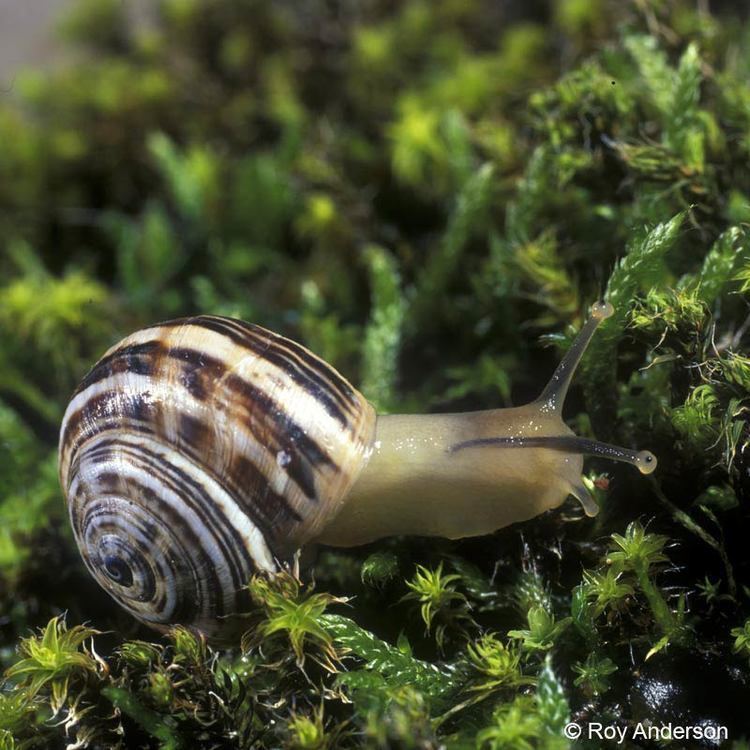 | ||
Similar Theba, Eobania vermiculata, Gastropods, Cernuella virgata, Molluscs | ||
Theba pisana cyprus
Theba pisana, common names the white garden snail, sand hill snail, white Italian snail, Mediterranean coastal snail, and simply just the Mediterranean snail, is an edible species of medium-sized, air-breathing land snail, a terrestrial pulmonate gastropod mollusk in the family Helicidae, the typical snails.
Contents
- Theba pisana cyprus
- D nenschnecke theba pisana
- Distribution
- Description
- Ecology
- Parasites
- Impact of invasions
- References

This species is native to the Mediterranean region, however, it has become an invasive species in many other countries worldwide. Theba pisana is a well-known agricultural pest in numerous parts of the world. The shell color varies from white to yellow-brown with light brown spiral markings.
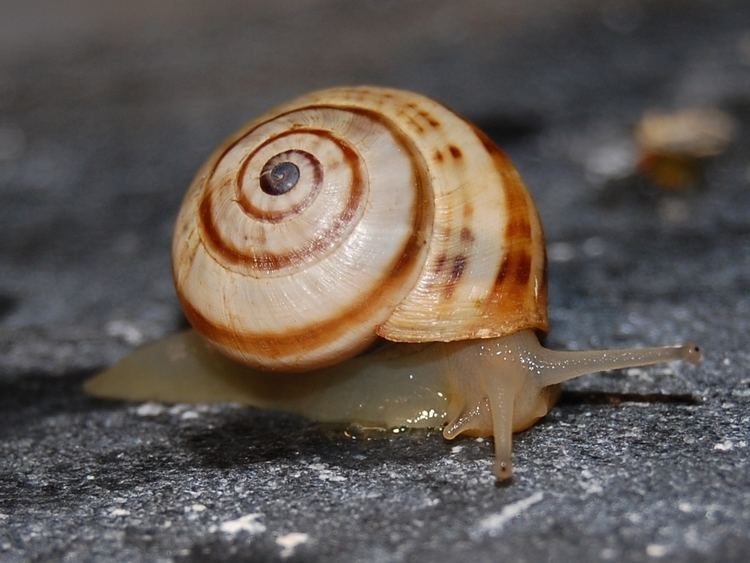
D nenschnecke theba pisana
Distribution
The species is native to the Mediterranean region. The type locality is Italy.

The distribution of Theba pisana includes the Mediterranean region and adjacent Atlantic coasts from central Morocco to north western Europe:
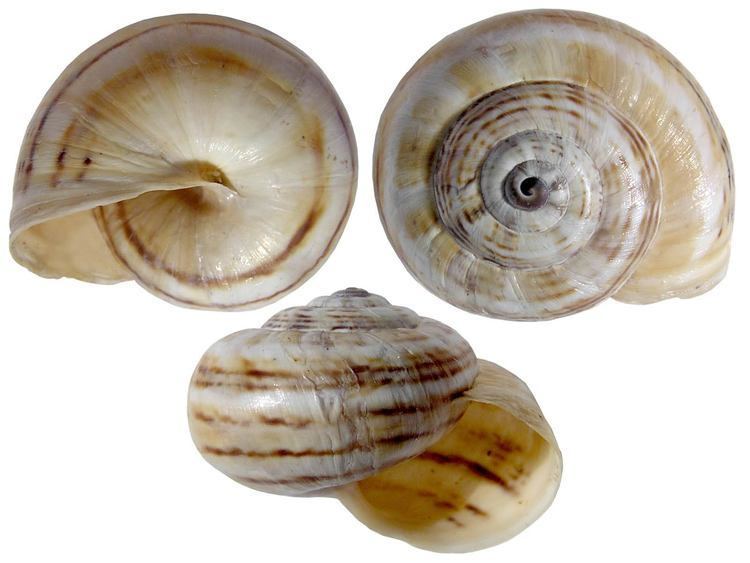
The species has been introduced to numerous other areas, including:

In many of these places T. pisana has become a problematic invasive species and a serious agricultural pest.
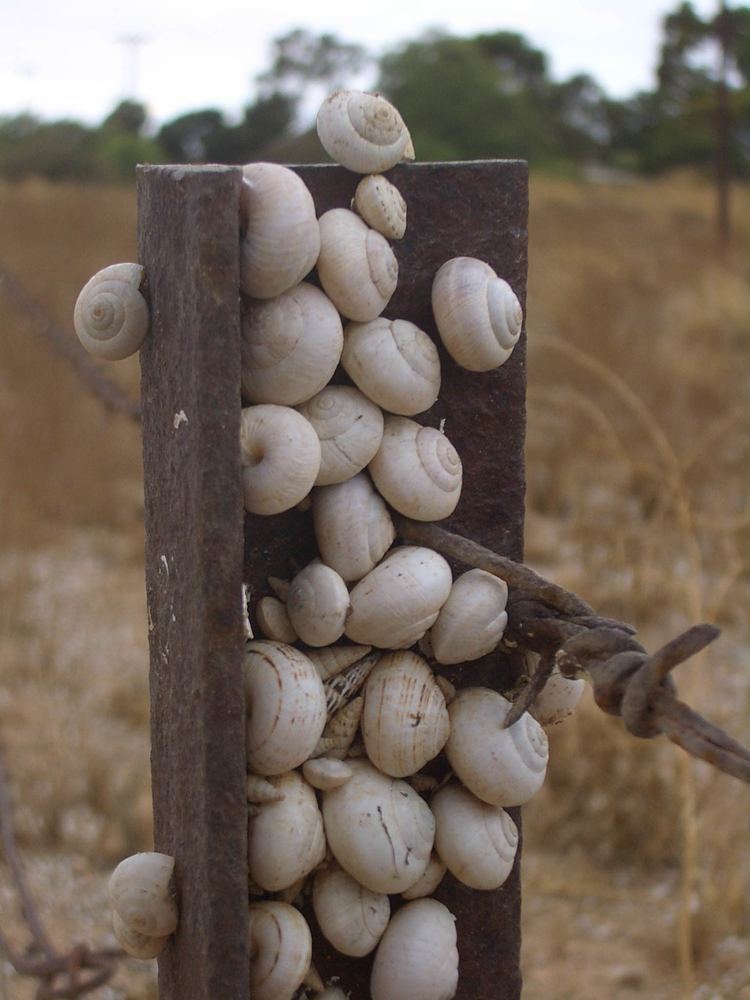
This species is already established in the USA, and is considered to represent a potentially serious threat as a pest, an invasive species which could negatively affect agriculture, natural ecosystems, human health or commerce. Therefore it has been suggested that this species be given top national quarantine significance in the USA.
Description
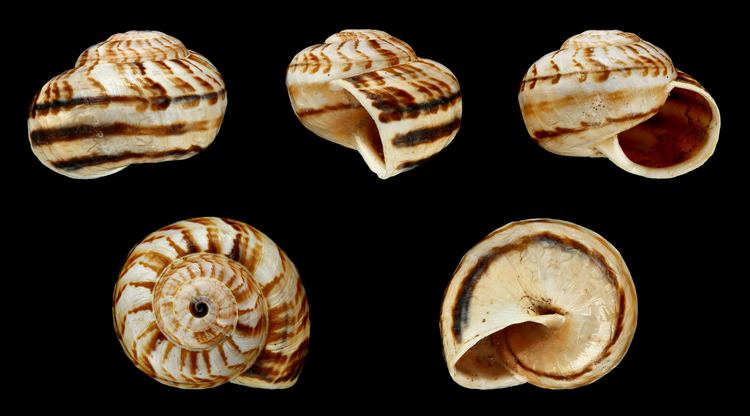
The shell background color is a creamy white. Different individuals may have shells with varying degrees of pale to dark brown markings. The markings, when present, may be in the form of uninterrupted spiral bands, spiral dotted lines, or small radial smudges.
The shell can be found in various colour variants, but is basically yellow or white with dark color bands or spots and often a dark bluish grey apex. The shells of juveniles are sharply keeled, however the keel is not present on the final adult whorl. The aperture often has a lip that is light reddish on the inside, and the lip margin is only reflected at columellar side. The umbilicus is narrow and half covered by the reflected columellar margin. The apex has a characteristic size in the eastern Mediterranean when compared with other species, where there are no other Theba species. The umbilicus is also rarely seen in other species. Juveniles of Eobania vermiculata have a considerably larger apex.
The width of the shell is 12–25 mm, but in Greece the adult shells are usually below 15 mm in width. The height of the shell is 9–20 mm. The visible soft parts are very light yellowish with dark colour bands running from the sides to the upper tentacles; the tentacles are very long.
This snail is sometimes confused with Cernuella virgata, a species with a much smaller and less inflated shell.
Ecology
Theba pisana usually lives in coastlands, in or near sandy habitats. In hot climates it aestivates often directly exposed to the sun, attached to grasses, shrubs or succulent plants, fence posts, tall weeds, and so on. It is common near beaches. In dunes it can live on nearly bare sand that is poorly fixed in place by grasses. In colder regions the snails do not aestivate, but they do climb on plants in dry weather. This snail does not survive serious winter frosts.
Theba pisana is often associated with two other land snail species Cochlicella acuta and Cernuella virgata, but it can live slightly deeper inside pure sandy habitats, and is usually more common than Cochlicella acuta. It is one of the most common snails in coastal regions from south Portugal to Greece.
In South Africa, a study showed that these snails were most abundant along roadsides; densities decreased dramatically with distance from roads. The snails were observed to be living on a variety of endemic and introduced plant species; these snails appear to be able to eat an unusually wide range of different food sources. Theba pisana is also a significant pest of citrus, vines, legume crops and cereals in South Africa. In Australia, it feeds on a range of agricultural plants.
in Britain and France, Theba pisana has an annual life cycle, breeding in summer and autumn, while in the Mediterranean, they have a biennial life cycle with breeding in autumn and winter. In South Africa, Theba pisana appear to have an annual lifecycle, breeding in autumn to winter and growing to adult size of about 14 mm diameter by the end of the following summer. Maturity is reached at half maximum shell size after 1 year. Maximum shell size is attained after 2 years. This species of snail makes and uses love darts. The size of the egg is 2.2 mm. In South Africa, the population density can reach up to 300-700 snails m².
In South Africa, these snails are active mostly at night and especially during periods of high humidity, irrespective of temperature.
Parasites
Theba pisana is an intermediate host for the terrestrial trematode parasite Brachylaima cribbi.
Impact of invasions
In addition to the direct negative effect of Theba pisana feeding on agricultural crops, it also has several other additional effects. It uses the stalks of cereals as aestivating sites, which in turn clogs machinery and fouls produce during mechanical harvesting.
According to Quick (1952) Theba pisana has been responsible for the extermination of native snail species as a result of competition for available food.
In their report on the status and potential impacts of alien invasive organisms in the fynbos biome, MacDonald & Jarman (1984) predicted that Theba pisana would have very little impact on ecosystem processes, such as nutrient cycling, energy flow and sediment dynamics or on the germination and succession processes of the plant community itself. However, the snail could seriously impact directly on fynbos plants, by feeding on them, and also displace native herbivores by competing with them for resources, and these effects have not been studied.
